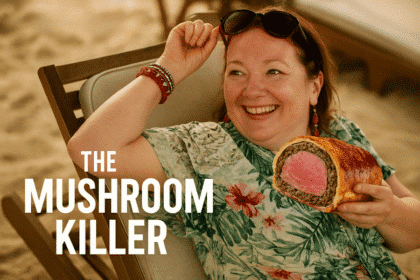Nine’s TV audiences soared in the first half of fiscal year 2025 with strong performances by Married At First Sight (up 23 per cent) and the Australian Open (up 5 per cent) lifting expectations Total TV revenue could grow in the high single digits for the March quarter.
Nine’s BVOD ad revenue is expected to grow by low teens this quarter with broadcast advertising revenue forecast to rise in the high single digit range on Q3 2024.
This would continue a solid year of audience and revenue gains, although the business is planning to carve out a further further $100 million in cost savings over the next 18 months.
Nine’s coverage of the Paris Olympic and Paralympic Games lifted Nine’s Total TV revenue by 2 per cent to $612.9 million year-on-year in the first six months of FY25.
Total revenue was up over the period by 1 per cent to $1.39 billion, marked by strong performances by Stan, 9Now and a solid return from Domain, while publishing took a hit from the withdrawal of Meta revenue.
Although group revenue was flat, Nine’s earnings (EBITDA) plummeted by 15 per cent to $268.4 million due to the cost of covering the Olympic and Paralympic Games.
Net profit after tax also took a hit, dropping 29 per cent to $95.1 million.
TV revenues not following eyeballs
Considering the metropolitan free to air advertising market declined by 10.1 per cent for the half, Nine’s 3 per cent broadcast revenue decline is well ahead of its competitive set.
Gains in BVOD revenue (up 28 per cent) more than offset broadcast TV’s drop, with 9Now reporting 9Now’s Daily Active Users growing by 77 per cent and streaming minutes up by 66 per cent. Stripping out the Olympic sugar rush, 9Now grew active users by 42 per cent and streaming minutes by 15 per cent.
Nine has claimed that its revenue share of 42.1 per cent is an all-time high for any network in the December half.
Nine’s acting CEO Matt Stanton told an investor call that he was bullish about the second half of FY25 and that audiences have been flocking back to TV.
“We’ve been seeing audience growth for some time now coming through,” he said. “Why are people coming to Nine, Seven and Ten? It’s to do with quality, premium content.
“For example, MAFS is incredible at the moment. On BVOD, 9Now is doing 1 million viewers as well as 2 million on our broadcast channel. These are huge audiences.”
Stanton pointed out that younger audiences are returning to TV with a quarter of Olympic viewing aged under 25 and programs like MAFS attracting large 16-39 year old audiences.
Although audiences across linear TV and BVOD have grown, Nine’s boss admits that revenue hasn’t followed.
“I don’t think (advertising dollars) have come in enough yet. I would expect they should be piling into platforms with trusted, great content,” he added.
“CMOs and CFOs that are trying to drive growth in their own businesses should be investing in 9Now and Nine.”

Stan soars
Stan posted revenue growth of 7 per cent for the period due to strong subscriber performance.
Paying subscribers are more than more than 2.3 million, with a 6 per cent lift in average revenue per user – a metric used to measure the value of subscribers.
The Olympics provided Stan with a shot in the arm, but this has been consolidated by a solid slate of programming including hit TV series Yellowstone, From, Arcadian and Joan.
Nine said that Stan Sport is also pulling strong numbers including its coverage of the UEFA Champions League, rugby and tennis majors.
Domain & audio
Real estate listings platform Domain, which is subject to a takeover bid by US business CoStar, lifted revenues by 15 per cent to $217.2 million. Domain reported EBITDA of $78m, up 14%.
This was due to a strong listings market throughout the half, with `for sale’ listings up 7 per cent.
Domain grew digital revenues by 8 per cent and 12 per cent growth in revenues from Domain’s core Residential business that accounted for more than 70 per cent of group revenues.
Nine’s contribution from Domain’s other digital businesses was broadly flat, with solid performances from its media businesses, as well as agent solutions, whilst “softness in property markets impacted on developers, and commercial”.
Nine’s audio revenues were up by 2 per cent to $53.6 million, with earnings up by 50 per cent to $5.7 million.
Modest growth reflected a flat metro linear radio ad market, while digital revenues grew by 33 per cent.
Publishing hit by soft ad market
Nine’s metro mastheads, including the Sydney Morning Herald, The Age and AFR continue to grow their audience with digital subscription revenue up by around 15 per cent. However, the division is being hurt by a weaker advertising market with print advertising down by 14 per cent, and digital advertising revenue dropping 4 per cent across the half.
Revenue was down by $20.5 million, which Nine says is largely due to Meta’s withdrawal from News Media Bargaining Code payments.
Publishing costs declined by $17m, or 8 per cent, with about half the savings sourced from the mastheads business, while lower revenue at nine.com.au and Pedestrian was more than offset by cost savings.









